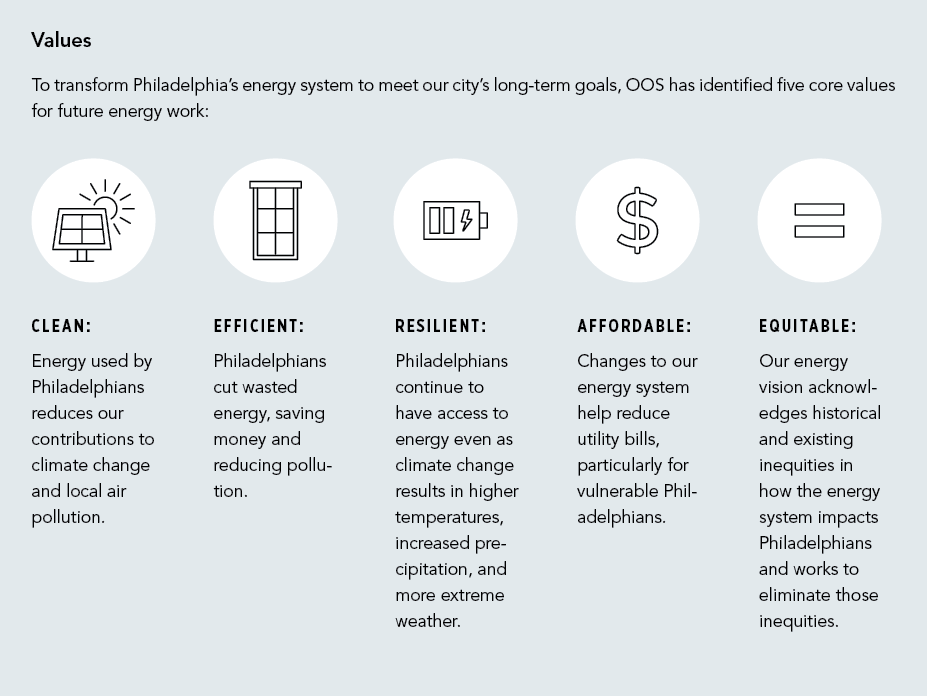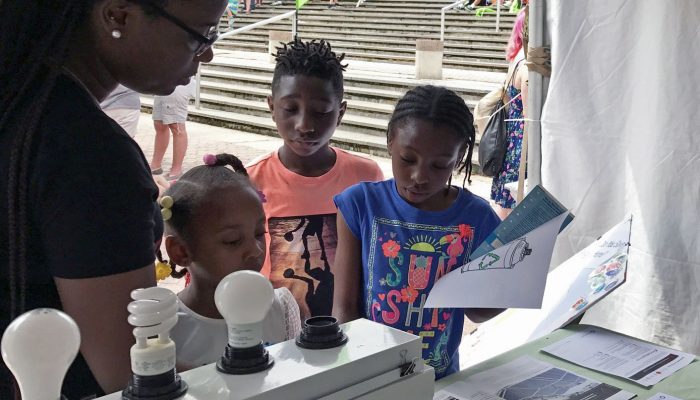We are excited to release a draft of Powering Our Future: A Clean Energy Vision for Philadelphia. This document is a long-term vision for a Philadelphia that achieves Mayor Kenney’s goal of reducing carbon emissions 80 percent from 2006 levels by 2050 while emphasizing equity and health for all Philadelphians.
Energy is at the center of our lives. But while all Philadelphians use energy, not all Philadelphians can easily afford its costs. Using energy more efficiently in our homes and transitioning away from burning fossil fuels to create energy will save money and reduce carbon pollution, which causes climate change.
Because our most vulnerable residents are disproportionately harmed by changes in our climate, the transition to a just energy system that is clean and affordable for all is critical to achieving an equitable Philadelphia.
Powering Our Future is a step toward meeting Philadelphia’s recent pledge to uphold the commitments of the Paris Climate Agreement and work toward a 100% clean energy future.
The CEV highlights current and expected trends in our energy system and identifies opportunities for the city, other government agencies, residents, and businesses to each lead on achieving our climate and energy goals.

Values
To transform Philadelphia’s energy system to meet our city’s long-term goals, OOS has identified five core values for future energy work: Clean, Efficient, Resilient, Affordable, and Equitable.
How We’ll Get There
Meeting Philadelphia’s energy and carbon reduction goals will require work across all levels of government and throughout our community. OOS has grouped this work into five categories, which will form the basis of the CEV framework:
- Clean Electricity Supply
- Citywide Solar
- Energy-Efficient Homes and Businesses
- Low-Carbon Thermal Energy
- Low-Carbon Economy
The CEV covers three major parts of Philadelphia’s energy system: our city’s 600,000 buildings, industry, and the regional energy system that powers them. Taken together, these sectors account for nearly 80 percent of carbon emissions in Philadelphia, and transforming them will be critical to achieving a clean and just energy future.
Give Us Your Feedback
The draft CEV will be open for comment through January 31st, after which a final version will be issued. To share your comments, read the document and take this brief survey. We are excited to hear your thoughts and to continue this work together in 2018 and beyond.

